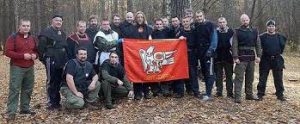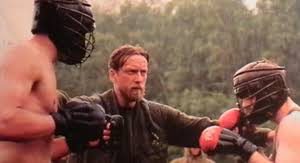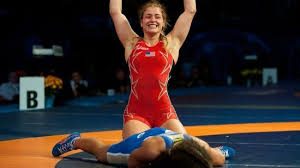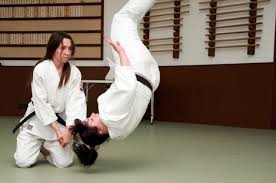SLAVIC-GORITSKAYA FIGHT (part3)
 GENERAL PROVISIONS.
GENERAL PROVISIONS.
Competitions in the Slavic-Goritsky wrestling are held in all these styles – with the exception of the breast – according to approximately similar rules. (In flexible rebuilding fights are held in the category “style versus style”, that is, with representatives of other martial arts). Their main principle is maximum realism with a minimum of restrictions on the equipment used.
The site should have an area of at least 36 sq. M., – with the exception of fire fighting competitions (at least 50 sq. M.). Continue reading
SLAVIC-GORITSKAYA FIGHT (part 2)
 BASIC STYLES.
BASIC STYLES.
Radogora – a style of hand combat, which incorporates the technical and tactical achievements of the schools of the Slavic-Goritsky struggle and other Russian fighting styles.
Hemline is a kicking style in which hands perform only protective functions. Ways of movement and attacks are borrowed from the fighting dances of the Slavs, from the historical schools of Russian hand-to-hand combat and European martial arts (Chasson, Savat, Puring, Folderskal). Continue reading
SLAVIC-GORITSKAYA FIGHT (part1)
 SLAVIC-GORITSKAYA FIGHT, a type of martial arts and a comprehensive martial art, consisting of four types and twelve basic styles, united by a common name. The Slavic-Goritsky struggle is the author’s system developed by A.K. Belov on the basis of the fighting and competitive traditions of the Eastern Slavs. The main objective of the system is to prepare a versatile fighter, able to fight by any rules and in any conditions, against several opponents (including armed ones), etc. Continue reading
SLAVIC-GORITSKAYA FIGHT, a type of martial arts and a comprehensive martial art, consisting of four types and twelve basic styles, united by a common name. The Slavic-Goritsky struggle is the author’s system developed by A.K. Belov on the basis of the fighting and competitive traditions of the Eastern Slavs. The main objective of the system is to prepare a versatile fighter, able to fight by any rules and in any conditions, against several opponents (including armed ones), etc. Continue reading
JUDO IN RUSSIA
 The founder of domestic judo is Vasily Sergeevich Oschepkov (1892–1937). He was born on South Sakhalin, which after the Russo-Japanese War was torn away from Russia in favor of Japan. Involuntarily becoming a subject of the Japanese emperor, Oshchepkov moved to Kyoto, where he studied in the Russian colony. October 29, 1911 was admitted to the famous Institute of Kodokan-judo, June 15, 1913 he was awarded the 1st dan. Continue reading
The founder of domestic judo is Vasily Sergeevich Oschepkov (1892–1937). He was born on South Sakhalin, which after the Russo-Japanese War was torn away from Russia in favor of Japan. Involuntarily becoming a subject of the Japanese emperor, Oshchepkov moved to Kyoto, where he studied in the Russian colony. October 29, 1911 was admitted to the famous Institute of Kodokan-judo, June 15, 1913 he was awarded the 1st dan. Continue reading
INTERNATIONAL AMATEUR FIGHT FEDERATION
 In 1912 an international committee was created to organize wrestling competitions. In 1921, the committee was transformed into the International Amateur Wrestling Federation – FILA. Today, FILA, uniting representatives of the free and Greco-Roman wrestling of 146 countries from five continents, is one of the largest and most influential international sports organizations. Continue reading
In 1912 an international committee was created to organize wrestling competitions. In 1921, the committee was transformed into the International Amateur Wrestling Federation – FILA. Today, FILA, uniting representatives of the free and Greco-Roman wrestling of 146 countries from five continents, is one of the largest and most influential international sports organizations. Continue reading


